Grieving the death of a pet can be a sad and lonely experience, but would you pay a year’s salary to get your furry friend back?
Well, a Canadian woman has done just that. Kris Stewart of British Columbia paid $50,000 for not one, but two clones of her late ragdoll cat, Bear.
Bear tragically died aged five, hit by a car in January 2022, and her new cats, Bear Bear and Honey Bear, are genetic twins of the beloved pet.
The new kittens were created through somatic cell cloning, which involved transferring the nucleus of one of Bear’s cells into a new egg cell.
The egg was then implanted into a surrogate mother, who gave birth to the kittens, which have zero percent of her DNA but 100 percent of Bear’s.
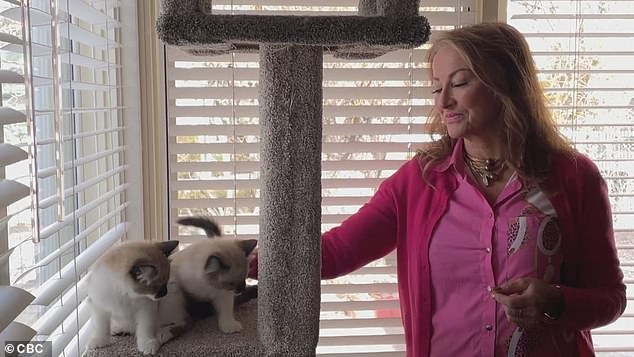
Kris Stewart with Bear Bear and Honey Bear, her new cloned kittens from Texas-based biotech company ViaGen.
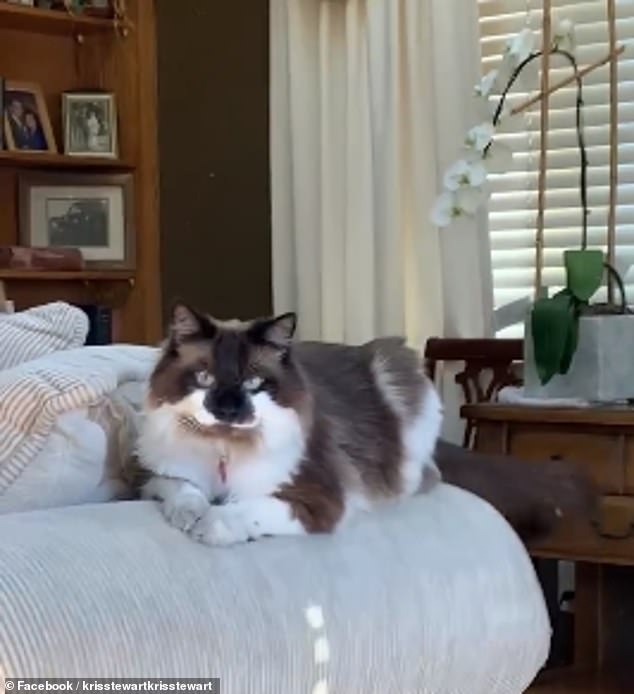

Bear, Stewart’s former cat, died in a car accident at just five years old. She wanted him back so she had him cloned
“I just felt like there was more life to be done by Bear,” Stewart shared CBC.
So she enlisted the services of the Texas-based company ViaGen, which calls itself ‘the worldwide leader in cloning the animals we love.’
After Bear Bear and Honey Bear were born to their surrogate mother on January 10 of this year, they spent two months at ViaGen’s facility in New York.
And Stewart was allowed to take them home this week.
“They both seem like Bears,” she said. ‘These guys are bold and brash.’
Her late cat was rambunctious and very intelligent, she told the CBC.
“Bjorn was the smartest animal I think I’ve ever had, and I’ve had animals since I was two years old,” explained Stewart.
In addition to cats, ViaGen also offers horse cloning.
Dogs and cats cost $50,000, while horses cost $85,000.
According to Stewart’s LinkedIn, she is the CEO of a nurse staffing agency.
This industry has proven particularly lucrative since the COVID-19 pandemic.
Weekly rates for travel nurses skyrocketed from between $1,000 and $2,000 pre-pandemic to between $3,000 and $5,000.
DailyMail.com has contacted her for comment.
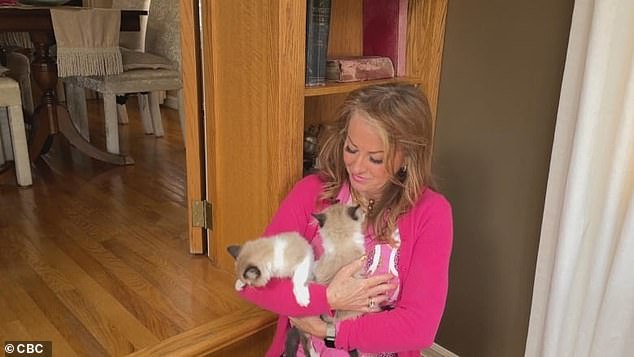

Stewart cuddles her new clone cats Bear Bear and Honey Bear, who just came home with her this week after eight weeks in ViaGen’s facility
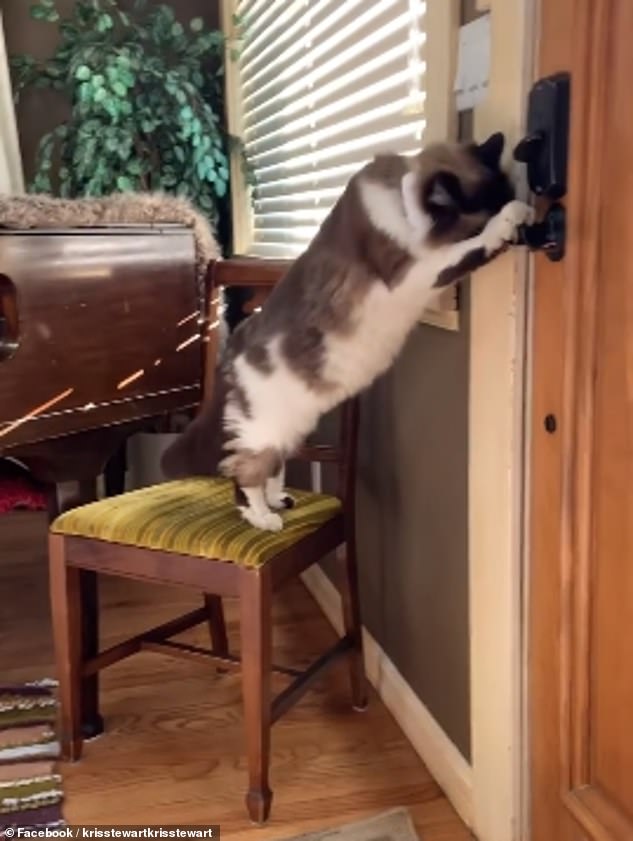

Bjørn, seen here trying to open a door, was extremely smart, according to Kris Stewart. She said that she thinks the clones are acting like he did so far
As for the technology, ViaGen uses somatic cell nuclear transfer to create a clone of a pet.
This is the same technique used to produce the famous Scottish sheep Dolly.
Somatic cell cloning, also called somatic cell nuclear transfer or just nuclear transfer, is simple in concept but difficult to perform.
It involves taking the DNA out of the cell from a donor – in this case a body cell, as indicated by the word ‘somatic’.
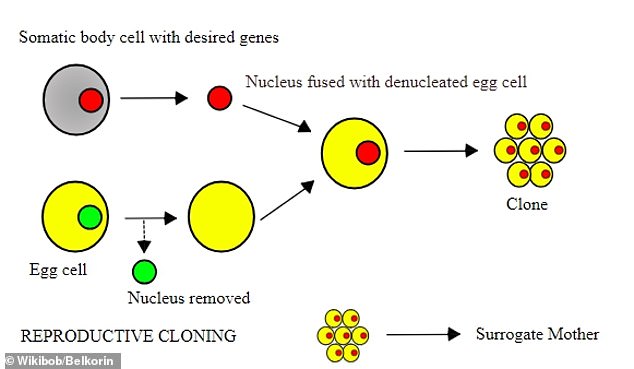

To create somatic cell nuclear transfer (SCNT) clones, scientists take DNA (red circle) from tissue and insert it into egg cells (yellow) with their DNA (green) removed. The researchers then turn certain genes on or off to help the cells replicate (right)
An egg cell then has its DNA removed, which must be replaced with the donor’s DNA.
This altered egg cell is then implanted into a surrogate.
When the surrogate gives birth, the child is genetically identical to the animal that donated the body cell and has no relation to her.
Cloned animals often do not survive birth, but those born healthy tend to do well.
This was the third attempt ViaGen had made to clone Bear, as the first two attempts had failed.
Although the kittens are genetic twins with Bear, it does not guarantee that they will have the same personality that he had.
In an extreme example, Texans Ralph and Sandra Fisher cloned their beloved gentle bull named Chance, only to have the clone beat Ralph twice.
But so far, the entrepreneur has said she is ‘thrilled’ with her new cats.

